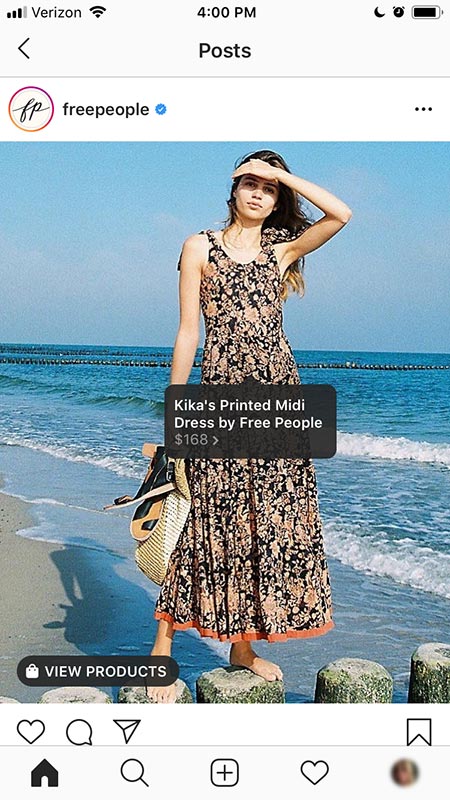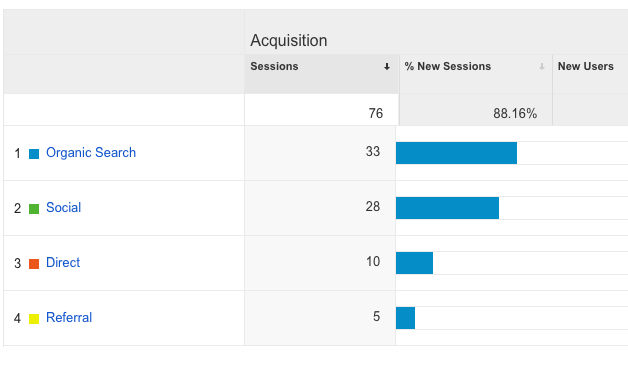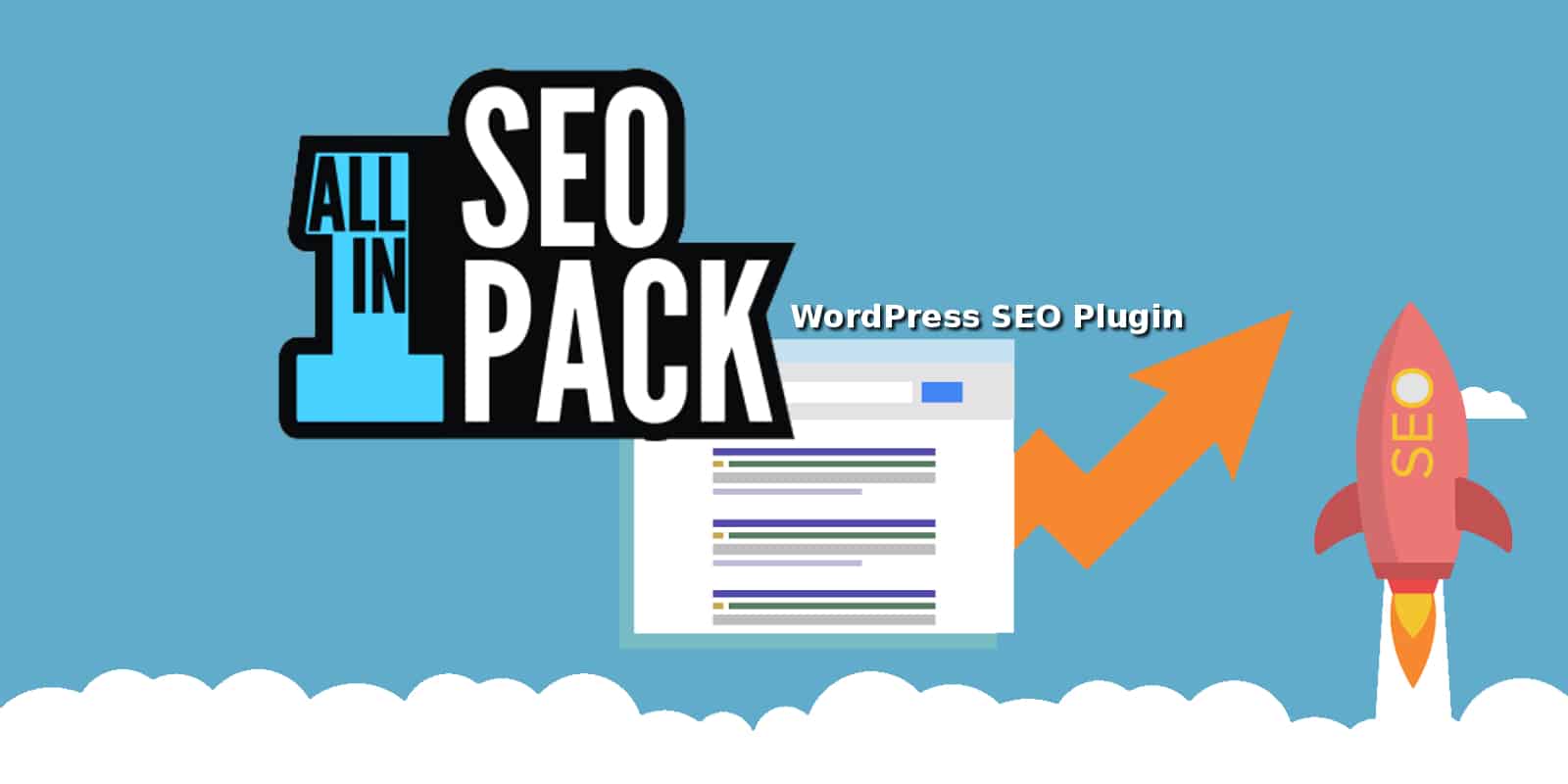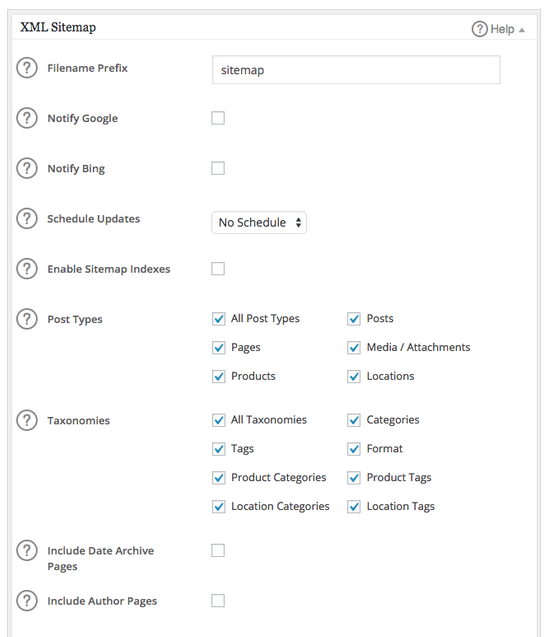Hi ! I’m Ilayda, the person behind this blog! I am currently a master student in Digital Business, in Paris, and here I would like to share the recent trends and tools for the digitalisation process in marketing.
Hi ! I’m Ilayda, the person behind this blog! I am currently a master student in Digital Business, in Paris, and here I would like to share the recent trends and tools for the digitalisation process in marketing.
Here’s a quick rundown of some of the most common digital marketing tactics and the channels involved in each one.
This is the process of optimizing your website to “rank” higher in search engine results pages, thereby increasing the amount of organic (or free) traffic your website receives. The channels that benefit from SEO include websites, blogs, and infographics.
There are a number of ways to approach SEO in order to generate qualified traffic to your website. These include:
This term denotes the creation and promotion of content assets for the purpose of generating brand awareness, traffic growth, lead generation, and customers. The channels that can play a part in your content marketing strategy include:
Want to learn and apply content marketing to your business? Check out HubSpot Academy’s free content marketing training resource page.
This practice promotes your brand and your content on social media channels to increase brand awareness, drive traffic, and generate leads for your business. The channels you can use in social media marketing include:
If you’re new to social platforms, you can use tools like HubSpot to connect channels like LinkedIn and Facebook in one place. This way, you can easily schedule content for multiple channels at once, and monitor analytics from the platform as well.
On top of connecting social accounts for posting purposes, you can also integrate your social media inboxes into HubSpot, so you can get your direct messages in one place.
PPC is a method of driving traffic to your website by paying a publisher every time your ad is clicked. One of the most common types of PPC is Google Ads, which allows you to pay for top slots on Google’s search engine results pages at a price “per click” of the links you place. Other channels where you can use PPC include:
This is a type of performance-based advertising where you receive commission for promoting someone else’s products or services on your website. Affiliate marketing channels include:
Native advertising refers to advertisements that are primarily content-led and featured on a platform alongside other, non-paid content. BuzzFeed-sponsored posts are a good example, but many people also consider social media advertising to be “native” — Facebook advertising and Instagram advertising, for example.
Marketing automation refers to the software that serves to automate your basic marketing operations. Many marketing departments can automate repetitive tasks they would otherwise do manually, such as:
Companies use email marketing as a way of communicating with their audiences. Email is often used to promote content, discounts and events, as well as to direct people toward the business’s website. The types of emails you might send in an email marketing campaign include:
Online PR is the practice of securing earned online coverage with digital publications, blogs, and other content-based websites. It’s much like traditional PR, but in the online space. The channels you can use to maximize your PR efforts include:
Inbound marketing refers to a marketing methodology wherein you attract, engage, and delight customers at every stage of the buyer’s journey. You can use every digital marketing tactic listed above, throughout an inbound marketing strategy, to create a customer experience that works with the customer, not against them. Here are some classic examples of inbound marketing versus traditional marketing:
With sponsored content, you as a brand pay another company or entity to create and promote content that discusses your brand or service in some way.
One popular type of sponsored content is influencer marketing. With this type of sponsored content, a brand sponsors an influencer in its industry to publish posts or videos related to the company on social media.
Another type of sponsored content could be a blog post or article that is written to highlight a topic, service, or brand.
Digital marketing is made up of a lot of moving parts – SEO, social media, marketing automation, PPC, and more. New technologies, techniques, and ever-changing Google and Facebook algorithms keep many digital marketing teams on their toes, including ours. Part of our job is to stay up-to-date on the upcoming trends so our clients’ digital marketing campaigns remain effective.
As we enter a new decade and tech continues to change at a rapid pace, here are the digital marketing trends we’re excited to see more of in 2020!
“Alexa, how many Americans own a smart speaker?”
“66.4 million, or over ¼ of adults in the US.”
That’s right, over 25% of adults in the US own a smart speaker like an Amazon Echo or Google Home. In addition, 31% of smartphone users worldwide use voice-activated search, like Siri, at least once a week. It is estimated that in 2020, 50% of all searches will be voice searches. That makes voice search one of the biggest online marketing trends of 2020.
This is the year that digital marketers can no longer ignore voice search. There are a lot of things you can do to optimize your site for voice search, but the most important change involves using long tail keywords like “how to make vegan brownies” instead of a shorter keyword like “vegan brownies.”
By now, you know that social media is a huge part of online marketing. What you might not realize is just how many people shop on social. 60% of Instagram users say they discover new products on Instagram and in a survey of over 4,000 Pinterest users, a whopping 70% said Pinterest helps them find new products.
These platforms have taken note of the fact that people are using them to shop and have made it easier for merchants to sell via social media. Over the past few years, Instagram, Pinterest, and Facebook all have ways for ecommerce stores to create shoppable posts using a native integration that makes it easy to tag and shop products directly in your posts. For online retailers, this is a great way to drive traffic to product pages.
Let’s look at this example from Free People on Instagram:

This photo is on their feed and when you tap the photo, the dress name and price appears. Tap the price and you’ll be taken to a screen with more information and the option to view the item on the Free People website. From this screen, you can also scroll and see more products.
By utilizing social commerce, you’re reaching new customers, reducing the barriers to purchasing, and dramatically shortening the sales funnel. While shoppable posts have been on the rise for the past few years, we expect them to become the norm in 2020.
Augmented reality (AR) and virtual reality (VR) have exploded in popularity over the past few years and are quickly becoming one of the top marketing trends. This year (2020), it is estimated that approximately 100 million people will use AR to shop online and in-store.
AR is already being used by major companies like IKEA. Using their app and AR, customers can see what a piece of furniture would look like in their space before purchasing (or even setting foot in a store)! Take a look at this shelving unit we tested in the TheeDigital conference room:

91% of buyers are looking for more interactive content online and in 2020, content marketing will shift its focus to give the people what they want. Shoppable posts, AR/VR, 360-degree video, quizzes, and polls are just a few examples of interactive content.

Interactive content will be one of 2020’s top marketing trends for a few reasons:
Automation is nothing new in the digital marketing world, but thanks to recent Google Ads updates announced at Google Marketing Live, we expect automation and smart bidding to become the norm for many PPC account managers.
Google Ads relies on machine learning to optimize your bids so you get the most value out of every conversion. The improvements announced at Google Marketing Live make optimizing your bids better than ever with the ability to choose conversion actions at the campaign level, the ability to optimize your bids across several campaigns with a set of desired conversion actions, and the ability to set bids to automatically change when a sale starts or stops. These improvements will help you maximize your conversions.
Personalized marketing is where it’s at in 2020. Consumers are tired of seeing generic ads that may not have anything to do with them. We change the channel when commercials are on (that’s if we still have cable) and pay extra to music streaming services to avoid ads. Traditional advertising and generic commercials are increasingly ineffective.
That’s where personalized advertising comes in.
90% of 1,000 people surveyed said they find personalization appealing and 80% said they’re more likely to do business with a company that offers personalized experiences. Customers are beginning to expect personalization and there are a lot of ways for digital marketers to deliver.
Segmented email lists are one of the most popular ways to personalize your online marketing efforts. In fact, personalized email blasts perform 3X better than generic emails sent to your entire list! Most email marketing tools, like MailChimp and Constant Contact, and marketing automation tools, like HubSpot and Pardot, make list segmentation simple and easy.
If you’re not personalizing your marketing messages, make 2020 the year that you make marketing personal.
Social media apps like Facebook Messenger, WeChat, and WhatsApp aren’t just for messaging friends anymore. These apps are becoming popular ways for businesses to communicate with their customers. In fact, Facebook Messenger sees over 10 billion messages exchanged between individuals and businesses each month.
Messaging apps are popular for businesses because customers find it convenient to have direct contact with companies. In addition, it allows for extremely personalized marketing, which we already know people love.
Here are a few ways businesses are using messaging apps:
Think about how your business can use social messaging apps in 2020!
Visual Search is just what it sounds like – using images instead of keywords in search engines. Already used in beta by Pinterest and Google, a visual search will allow users to take a picture of something they would like to search for (to buy or find similar items) and the uploaded picture will be used to find results. As this technology only grows and improves, even Pinterest’s CEO Ben Silbermann has predicted that “the future of search will be about pictures rather than keywords.”
When Snapchat was released in 2017, it was the first social media platform to conceive of the “story” – short and sweet picture or video messages that disappear after 24 hours. As the concept of the story has spread in popularity over other social media platforms like Facebook and Instagram, the story is no longer just a phenomenon for millennials and gen z. Now companies, large and small, are using them to increase brand awareness and take the opportunity to interact with a younger audience. Try stories on Snapchat, Instagram, and even Facebook.
Giving your audience an efficient and courteous customer experience has to start from the ground up – with your employees. As the face of your company, your employees need to be not only knowledgeable of your brand but engaged and happy to be part of it. By engaging them in your brand, you ensure that they want your business to succeed just as much as you do.
We’re in a whole new era. Gone are the days when you could afford to ignore the internet. If you want to achieve success, regardless of your industry, it’s imperative to have a sound online marketing plan in place from day one – a strategy that leverages the power of social media, uses search engine optimization to drive traffic, and makes good use of the media marketing advancements that are out there.
In the past, I’ve discussed a variety of tools for specific areas of digital marketing. For example, this post details the top tools for launching your first content marketing campaign.
In this post, however, I’m going to outline 5 online marketing tools that you need when starting a business. You may be familiar with a marketing tool or two in here; others might be new to you. But from simplifying your social media marketing efforts to project management, each of these tools will help you get that competitive edge you’re after.
Are you ready to grow your business through online marketing?
Let’s start !

Get this: email marketing technology is used by more than 80% of B2B and B2C companies.
This isn’t something you should wait on. Instead, you should implement an email marketing strategy on day one.
With more than 12 million customers, MailChimp has claimed its spot as one of the top email marketing providers in the world. While there are alternatives, this tool remains one of the best, for many reasons:
When starting a business, it’s not likely that you will have more than 2,000 subscribers. For this reason, you can get started with MailChimp early on, using the tool for free as you get your feet wet with email marketing.

As one of the top free tools from Google, Analytics should be part of your digital marketing strategy from the very start.
It only takes a couple of minutes to add the Analytics code to your website, giving you the ability to track every action by every visitor.
This is considered by many to be nothing more than a traffic tool, but it can actually have a big impact on your marketing strategy, if you know what you’re doing.
Take, for example, the ability to see where your traffic comes from:

Maybe you realize that a particular social media campaign is driving tons of traffic to your website. With this data, you can adjust your future strategy, in an attempt to capture the same results.
Or, maybe you find that a particular set of keywords is doing wonders for your organic traffic. Again, you can turn your attention to these keywords, ensuring that you keep these in mind as you create content down the road.
Google Analytics isn’t one of those tools that you should ignore. Installing this early on is a key decision, in regards to your online marketing strategy. The data you can collect and review is extremely valuable.

When it comes to marketing, sales and CRM software, HubSpot has become one of the top players.
For the sake of this post, let’s focus on its marketing software solutions. The company has this to say about its all-in-one marketing software:
From attracting visitors to closing customers, HubSpot brings your entire marketing funnel together.
You know just how important it is for your marketing funnel to be in good working order. With this software, you have access to tools that help with:
There is no stone left unturned, when you rely on HubSpot’s all-in-one marketing software. That’s why it’s a top choice for those who are starting a business.
With everything you need in one place, you don’t have to pull yourself in many different directions. This will help you to achieve greater success in the early days, as you’re sure to have many other tasks on your plate.

If WordPress is your content management system (CMS) of choice, you shouldn’t hesitate to install the All in One SEO Pack plugin.
A big part of your online marketing strategy should be based around search engine optimization (SEO) and this tool will ensure that you always make good decisions regarding your content and its appeal to search engines.
Some of the top features of the plugin include:
Even though all of these features are exciting, it’s something else that has made it one of the most popular WordPress plugins of all time: its ease of use.
Here’s a screenshot, showing a small portion of the tool’s back end:

You don’t have to make many decisions in order to get started. And, if you’re ever confused as to what you should be doing, there is help to be had. All you have to do is click the “?” symbol and you’re provided with more information and advice.
The All in One SEO Pack plugin has more than one million active installs. You won’t have to look far to find competitors, but there’s a reason why so many people use this tool. Not only is it free and simple, but it’s results can’t be denied. It will definitely help your website, from an SEO perspective, which is something all new businesses are interested in.

For those new to content marketing, Trello might sound like another social network that’s popped up overnight.
It’s not. In fact, it’s a great organization tool that can help you and your online marketing team considerably.
Trello is a tool that helps you to manage projects and stay on the same page as your team -a sound digital marketing practice if you want to save time and frustration.
For example, you can share blog posts on Trello before you publish them. This gives others on your team the opportunity to review the post, weigh in with their thoughts and make changes that could strengthen the piece before it goes live.
In the past, before the days of Trello and similar programs, email was the best way to collaborate with your team. While this is still helpful, to a certain degree, it can lead to confusion, missed messages and frustration.
With Trello, everything related to your online marketing strategy can be shared in the same place. It only takes a few minutes to set up a board. Even better, you can quickly invite your entire staff, all of whom can jump in on the action without delay.
Trello isn’t the only tool of its type, but it’s, by far, one of the best. When it comes to collaborating with others regarding marketing tasks, this tool is hard to beat.
Current Contributions of AI in Marketing
In marketing, one of the domain AI is used for is transforming big data into meaningful customer insights. In this process there are two types of data analyzed; structured and unstructured data. Structured data is made of standardized datasets like web-browsing history whereas unstructured data consists of great amounts of user generated data which is not specifically categorized . Here, AI’s power is distinguished from traditional computing in processing large numbers of unstructured data incredibly rapidly.
Different sub-fields of AI contribute to numerous marketing and customer relationship activities. Thanks to natural language processing, AI can give meaning to blog entries, customer reviews or posts on social media. Through image recognition, AI can detect the objects and recognize people on social media posts in order to understand consumer behavior or it can gather consumer demographics as well as emotional reactions from optical sensors placed on retail shelves. Speech recognition makes it possible for AI to analyze customer service calls and increase their client service performance. However, as machine learning operates by deducing information from patterns, the more data provided it has, the more accurate the results get.
In addition to processing information, AI can also synthesize content for advertisements, e-mails or articles, natural language generation; it can construct images and videos, image generation; and it is able to generate human speech, speech generation.
In order to analyze better, marketing activities can be divided into various categories where it can benefit from AI. Firstly, companies need to analyze macro-environmental factors that have an impact on the organization and marketing. In this process, AI can bring insights about the market through analyzing trends and competitors. Moreover, AI can help by analyzing large amount of unstructured data in comparison to time consuming data collection in traditional market research.
Furthermore, AI assists to carry out better segmentation and customer targeting. It proposes more refined customer groups for better brand and product recommendation. For instance, media company Astro benefits from Microsoft’s AI services Azure for creating customer profiles. A software called Medallia is able to infer consumer preferences from online data like social media or online activities. Another example comes from Harley Davidson’s campaign assisted by Adgorithm’s AI platform, Albert, in which Harley Davidson provided past customer data in return Albert created similar consumer lists which later held 40% of the companies’ sales.
Additionally, AI can assist with finetuning product strategy and giving better recommendation based on recent customer needs and trends. For example, fashion brand Choosy uses Instagram’s trending posts to prepare 10 styles per week that are available to order before production to maximize sales and optimize stock control. An AI tool, Lily AI is employed by fashion retailers for increasing the basket size thanks to its deep understanding of the customer choices and suggestions for completing the look. Fashion retailer Asos uses Microsoft Azure’s real time product recommendation tool for its online customers.
AI can also be used for adapting pricing strategies by the analysis of consumer price sensitivity and elasticity and competitor’s pricing. Dynamic pricing is one tool used by hotels to balance supply and demand in the market while maximizing their profit. Uber changes its price by analyzing weather and traffic situation in addition to the demand at the moment. Airbnb helps the hosts to adapt prices for different dates thanks to machine learning algorithm.
Moreover, AI helps to create new distribution channels. Browzzin, a social commerce platform, transforms contents of posted images into shoppable items. Google introduced shoppable ads which appear on image search and it has a similar potential with Pinterest’s shoppable items . Shoppable content apps like Browzzin and Pinterest’s visual search transform sales channels by allowing customers to search and buy products anywhere they want.
Marketing communications benefit from AI for targeting and placement of the right communication for the right customer in order to maximize its effect while reducing the cost. For instance, Lego used AI powered interactive ads, trained by Lego products and based on customers specific interests the system crafted the ads. This method allows advertisers to personalize communication and making it more interesting for the consumer and it is decreasing cost per view in the target segment.
Moreover, interest in AI for customer service applications is increasing. In US, AI is currently used by 24% of customer service teams but 56% is actively searching for AI solutions to use. Chatbots are being employed for simple queries and companies benefit significant cost reductions. However, personal preferences change from one person to another for willingness to use chatbots instead of human interaction. That is risk companies need to be aware of while implementing chatbots in customer services. Moreover, AI extends the customer satisfaction metrics by adding tools of multimodal emotion detection which understands customer satisfaction by the changes in voice volume or pauses in the speech.
Earlier this year, we spent some time looking at digital transformation trends by industry, but another important lens we can use to examine digital transformation is by work group, or specific enterprise department. Clearly, IT has experienced a gut punch when it comes to change in today’s modern workplace. But for me, the most exciting place to start departmentally is through marketing’s digital transformation.

Goodbye Promotion, Hello Relationship
Probably the most important element of marketing’s digital transformation is that the marketing department is no longer a show-and-tell function, it’s a relationship function. Gone are the days of scheduling billboards, full-page newspaper ads, radio commercials and calling it a day. Today’s marketing teams are being forced by customers to be responsible for what they’re selling, not just the day their ad goes live, but throughout the life of the entire product. Customers are turning to social media to interact with companies—for better or for worse. They want two-way feedback, product communities, and a commitment to service and they want it now. That means marketing departments need to use technology, first and foremost, for communication. And they need to make sure they’re grabbing valuable customer insights from every exchange.
The customer experience has skyrocketed to a top priority for marketing departments. If a customer doesn’t feel valued from the first touchpoint, then they probably won’t ever be a loyal customer—and that’s just not acceptable with what is now available.
Goodbye Gut, Hello Data
That brings us to data. Every time a customer interacts on the customer journey, the marketing team must be using that exchange for the purpose of making the customer experience better. They need to nab more than just numbers and customer loyalty points. Emotions should be recorded in someway too. Marketing departments then need to plug all that knowledge back into the customer journey flow through personalization (including personalized incentives, coupons, messaging, etc.). And they need to do this all in real time. Not too big of an order, right? Which brings us to the next point in marketing’s digital transformation.
Goodbye Legwork, Hello Automation
Today’s customers aren’t the most patient. Instant gratification is the name of the game—admit it, you’re guilty of this too. Customer’s want their product now—and they want to be acknowledged now. No matter how fast we as humans operate, we aren’t able to operate in real time 24/7. That’s where automation comes in. Today’s AI allows marketing teams to switch product messaging in real-time, meet customers in the almost-abandoned online shopping cart in real time, and hit them with smart beacon coupons at precisely the right moment. Automation allows marketing departments to fill the gap where human effort simply can’t function. It also further compounds customers’ impatience, but that’s another part of marketing’s digital transformation story!
Goodbye Corporate Dungeon, Hello Corner Office
Marketing’s digital transformation story is one of elevation. Because digital transformation has empowered marketing teams so much, today’s CMOs are being promoted to hold a larger seat in the C-suite. They’re not just being tasked with more work, their insights are being given greater weight (some would say a little too much). Today’s companies know that without their marketing teams meeting the moment-to-moment needs of customers (and reading their minds in real time), their company would get left behind.
But this elevation is also a double-edged sword. Eighty percent of CEOs have expressed dissatisfaction with their CMOs. Perhaps it is pressure from competition or perhaps it pressure from customers, it’s tough to say. But CMOs have a tough job and have the highest turnover rate in the c-suite, lasting on average just over 3 years. But don’t let these facts discourage you. Afterall statistics and averages change. Successful CMOs know they need the right team around them to support them, accomplish goals, and go above and beyond for the customer. Which leads me to my next point.
Goodbye Sales People, Hello Creative Souls with Heart
In marketing’s digital transformation, today’s marketing teams are no longer merely sales people. They’re creative and curious people with a strong soft skill sets—willing to listen to the data, but also willing to think beyond it. They’re people who are constantly thinking of ways to improve the customer experience and get to know their customers even better at every phase of the journey. They’re people who play an active role in the culture of the company and can help inspire everyone within the enterprise by imagining what’s possible.
These are the people that help support the CMO. The ones that bring ideas to life. The ones that think outside the box. Doesn’t that sound like a team you’d want to build?

Hello Opportunity
Marketing’s digital transformation is just as huge as its role in digital transformation. We know that in many instances, marketing teams are leading digital transformation for the entire enterprise, making them an integral part of the team. When put together well, a marketing team can make or break a company. That’s a lot of pressure for legacy marketers who are more keen to place ad-buys and call it a day. It’s also a huge opportunity for those marketing professionals hungry for transformation, experience and change. There is tremendous power in marketing’s digital transformation. The savviest companies today will take advantage of it.